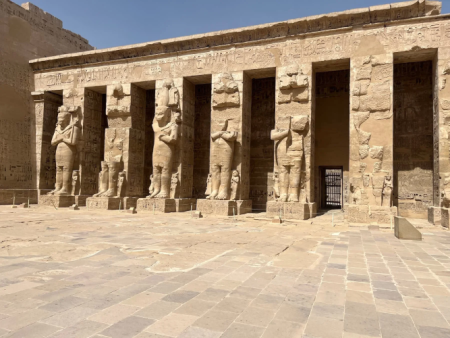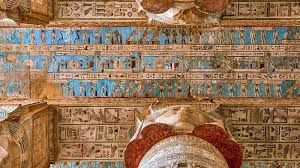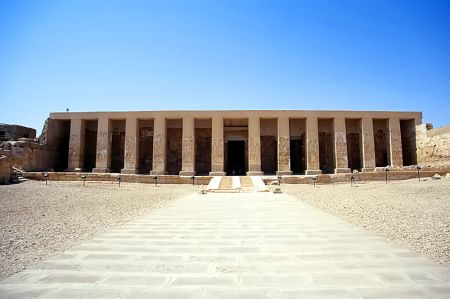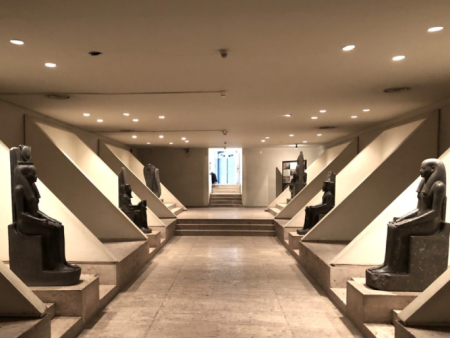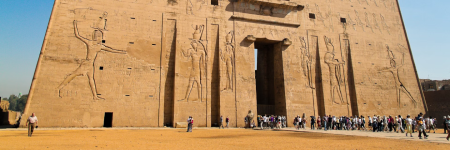Tomb of Ramses VI
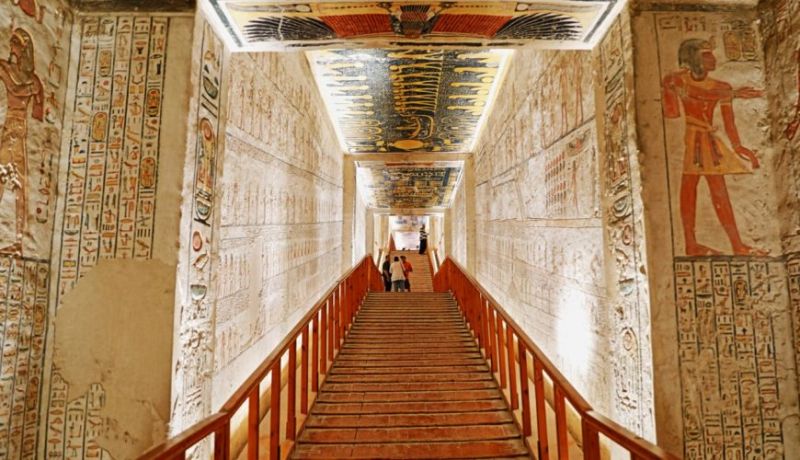
Tomb of Ramses VI: A Majestic Legacy in the Heart of the Valley of the Kings
The Tomb of Ramses VI stands as one of ancient Egypt’s most extraordinary monuments, glowing with timeless grandeur and mystical energy deep within the Valley of the Kings near Luxor City. This royal burial site, designated KV9, captures the very essence of Egypt’s New Kingdom artistry, symbolism, and spiritual devotion. Built initially for Pharaoh Ramses V but later usurped and expanded by his successor Ramses VI, the tomb reveals not only the opulent craftsmanship of the 20th Dynasty but also the pharaoh’s unwavering faith in the divine order of the universe. Every inch of the walls, ceilings, and corridors bursts with intricate hieroglyphics, celestial maps, and sacred depictions from the Book of the Dead and the Book of Gates, reflecting the Egyptian belief in eternal life beyond death.
Stepping into the Tomb of Ramses VI isn’t just a visit to an archaeological site; it’s an emotional journey through time. The tomb’s vivid blue ceilings sprinkled with golden stars transport visitors into a cosmic world where gods, goddesses, and pharaohs intertwine. The artwork serves as both a guide for the deceased king’s soul and a visual testament to the unmatched sophistication of ancient Egyptian art. For travelers exploring Egypt Travel Packages, this tomb is a must-see masterpiece that stands shoulder to shoulder with icons like the Great Pyramids of Giza and the Karnak Temple.
Every curve, corridor, and chamber within the Tomb of Ramses VI was designed to guide the pharaoh toward eternal rebirth. The tomb’s detailed inscriptions tell stories of divine judgment, resurrection, and cosmic balance. For historians, it’s a treasure chest of information on religious evolution, royal lineage, and ancient craftsmanship. For travelers, it’s a breathtaking encounter with the splendor of humanity’s earliest architectural genius. The tomb brims with spiritual resonance, reminding all who enter that the journey through the afterlife was the ultimate adventure of the soul. Now, let’s delve deeper into the fascinating history, architecture, and meaning behind this magnificent resting place.
Historical Background of the Tomb of Ramses VI
The Tomb of Ramses VI originated during the 20th Dynasty, approximately in the 12th century BCE. Initially planned for Ramses V, the tomb was later taken over by his uncle and successor, Ramses VI, who expanded and completed it. This royal decision wasn’t merely practical—it symbolized continuity, divine legitimacy, and dynastic authority. Ramses VI’s reign, although marked by political instability, demonstrated a strong devotion to preserving Egypt’s traditional religious identity. The tomb thus became an artistic manifesto of royal divinity and cosmic order.
During the New Kingdom, pharaohs sought eternal life through elaborate tombs hidden within the Theban cliffs. The Valley of the Kings was chosen for its strategic protection and sacred landscape. Within this valley, the Tomb of Ramses VI shines as one of the most visually stunning achievements of its era, blending mythological storytelling with celestial geometry. Even centuries after its creation, its colors remain astonishingly vivid—proof of the artisans’ mastery of natural pigments and symbolic composition.
Architectural Design and Layout
Spanning over 100 meters in length, the Tomb of Ramses VI features a linear design typical of the late New Kingdom period. Divided into several corridors, chambers, and a burial room, the tomb gradually descends into the heart of the mountain. Each space flows seamlessly into the next, creating a spiritual progression from the earthly realm to the world of the gods. The ceilings are adorned with constellations and scenes from the astronomical books, while the walls narrate the pharaoh’s passage through the underworld toward rebirth.
The entrance corridor, decorated with the Book of Gates and the Book of Caverns, symbolizes the soul’s journey through the night. The imagery is breathtaking—Ramses VI is often shown merging with the sun god Ra, emphasizing his transformation into a divine being. The burial chamber, the most magnificent of all, houses a colossal granite sarcophagus and a stunning ceiling showcasing Nut, the sky goddess, arching over the world. The artistry elevates the tomb beyond mere architecture—it becomes a cosmic stage for the cycle of creation and resurrection.
Artistic Symbolism and Religious Meaning
The Tomb of Ramses VI is not just a burial site—it’s a theological statement carved in stone. The wall scenes follow the pharaoh’s spiritual passage through the underworld, guided by Anubis and Osiris. The text from the Book of the Earth and the Amduat guides the deceased ruler to his eternal rebirth with the rising sun. Every symbol, from the scarab beetle to the winged sun disk, represents transformation, protection, and divine guardianship.
Ramses VI’s artisans achieved an extraordinary synthesis of color and message. The deep blues reflect the heavens, while vivid reds and golds evoke divine energy. The tomb’s harmony between architecture and art mirrors the Egyptian view of life and death as two halves of the same cosmic rhythm. Many modern Egyptologists consider this tomb a pinnacle of symbolic expression—a visual theology carved for eternity.
The Discovery and Preservation of KV9
The Tomb of Ramses VI has been known since antiquity, but systematic exploration began in the 19th century with archaeologists uncovering its rich decoration and structure. Over the years, conservation efforts have focused on stabilizing pigments, repairing damages caused by humidity, and managing tourist access. Today, the tomb stands as one of the best-preserved monuments in the Valley of the Kings, admired by visitors on Egypt Excursions and scholars alike. Thanks to modern preservation, every detail—from the carved hieroglyphs to the vibrant celestial ceiling—remains remarkably intact.
Interestingly, the tomb also served as a shelter for early explorers and Coptic hermits who left graffiti on the walls, unknowingly contributing to its layered historical value. The fascinating mix of ancient hieroglyphs and later inscriptions provides an unbroken chain of human interaction with the site for over three millennia.
The Mystical Experience of Visiting the Tomb
Walking into the Tomb of Ramses VI feels like crossing the threshold between worlds. The cool, silent chambers envelop visitors in an aura of mystery. The illuminated walls shimmer with color, and the air seems to hum with energy. It’s an experience that stirs the imagination and awakens a sense of awe rarely felt in modern life. Standing beneath the celestial ceiling, travelers can almost sense the divine presence that ancient Egyptians believed watched over their kings.
For those journeying through Egypt Nile Cruises, visiting the tomb adds an unforgettable layer to exploring the world’s greatest open-air museum. Combining a trip to the Luxor Temple, the Temple of Hatshepsut, and this royal tomb completes an essential journey through Egypt’s divine landscape.
Ramses VI: The Pharaoh Behind the Tomb
Ramses VI, born Nebmaatre-Meryamun, ruled during one of Egypt’s most challenging eras. His reign, though brief, exemplified the resilience of pharaonic authority amid economic decline and internal strife. Despite these hardships, Ramses VI maintained Egypt’s religious traditions and monumental ambitions. His decision to claim and enlarge Ramses V’s tomb symbolized not only political dominance but also his determination to secure a divine legacy.
Through the tomb’s inscriptions, Ramses VI presents himself as an intermediary between gods and men, a living incarnation of Horus and Ra. His emphasis on cosmic order and resurrection represents the ancient Egyptian conviction that kingship was eternal—even when time tested the empire’s might. This belief ensured that Ramses VI’s name would endure, his tomb acting as both a sanctuary and a celestial narrative of divine kingship.
Legacy and Influence in Egyptian Art
The artistic style of the Tomb of Ramses VI influenced later artistic conventions across Egypt. The precision in line work, the symmetry of divine figures, and the celestial motifs became reference points for royal tombs that followed. Its intricate cosmology inspired scribes, priests, and artists in religious centers like Thebes and Abydos, ensuring that Ramses VI’s legacy extended well beyond his mortal reign.
For modern visitors and Egyptologists, KV9 is a bridge between the past and present. It’s a tangible link to the human desire to understand existence and transcend mortality. Each symbol, each line etched into stone, whispers the pharaoh’s timeless message: life continues beyond death.
FAQs about the Tomb of Ramses VI
Where is the Tomb of Ramses VI located?
The Tomb of Ramses VI lies in the Valley of the Kings on the west bank of the Nile near Luxor. Nestled among Egypt’s most celebrated royal tombs, it’s easily accessible and often included in guided tours through Egypt Luxury Tours.
Who built the Tomb of Ramses VI?
The tomb was initially constructed for Pharaoh Ramses V but later usurped and completed by Ramses VI. He expanded the chambers, enhanced the decorations, and added his own royal inscriptions to secure his eternal place among the gods.
What makes the Tomb of Ramses VI unique?
Its celestial ceiling, exceptional preservation, and detailed religious texts make KV9 one of the most spectacular tombs in the Valley of the Kings. The artistry and symbolism illustrate the Egyptian concept of resurrection and divine order unlike any other site.
Can tourists visit the Tomb of Ramses VI today?
Yes, the tomb is open to visitors and remains one of the highlights of any trip to Luxor. Travelers can easily include it in their itinerary alongside temples, museums, and other ancient sites through curated Egypt Vacations Packages.
What do the wall paintings in the Tomb of Ramses VI represent?
The paintings depict the pharaoh’s journey through the afterlife, guided by gods such as Osiris and Ra. They include scenes from the Book of Caverns, the Book of Gates, and the Book of the Earth—each representing stages of death, rebirth, and divine acceptance.
The Tomb of Ramses VI continues to fascinate historians, travelers, and spiritual seekers alike. As one of ancient Egypt’s crowning achievements, it invites all who enter to ponder the mysteries of eternity, the power of faith, and the enduring brilliance of human creativity. Whether explored under the golden light of Luxor or through a well-planned Egypt Travel Package, this tomb remains a timeless encounter with the soul of ancient Egypt itself.






